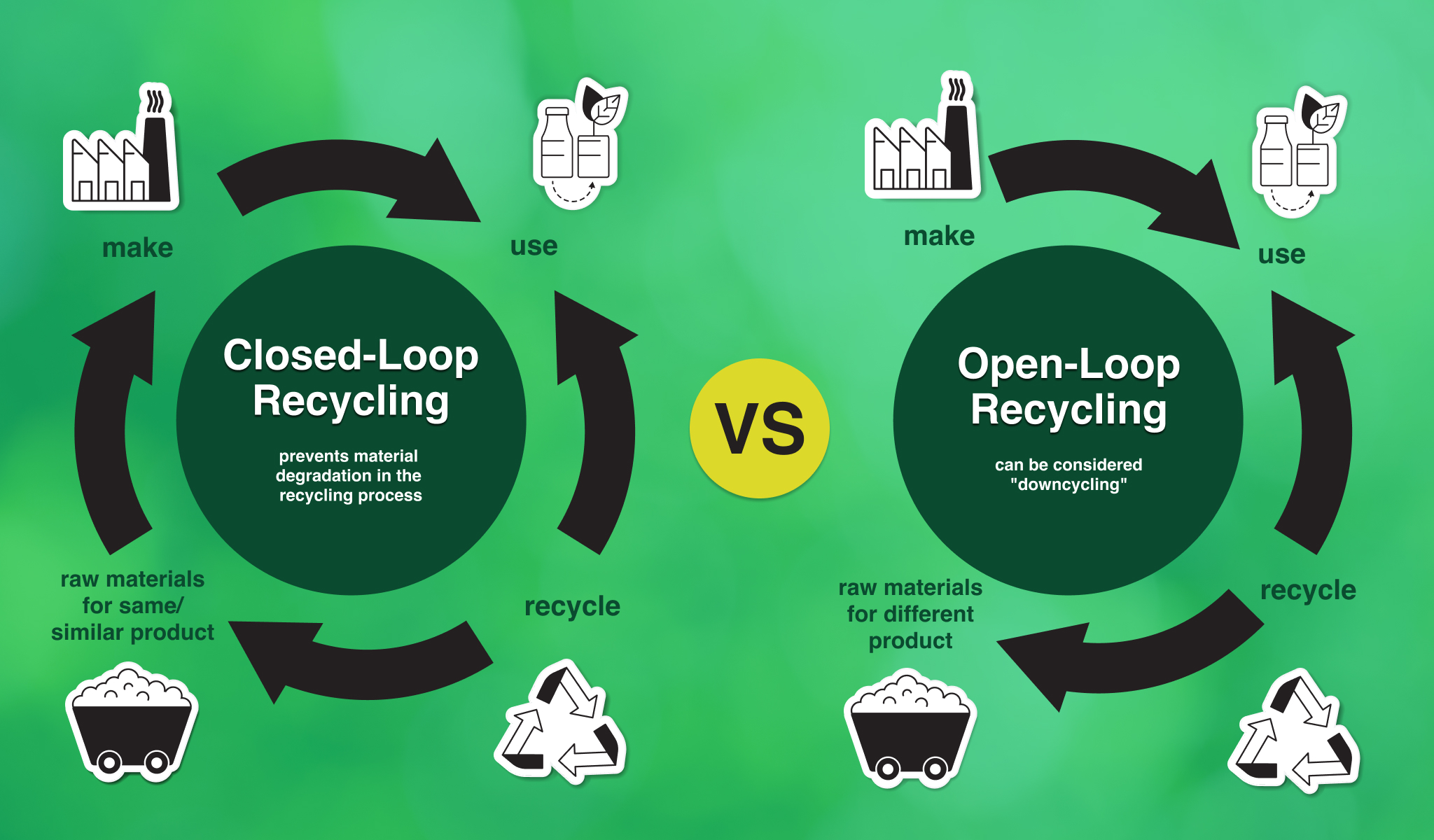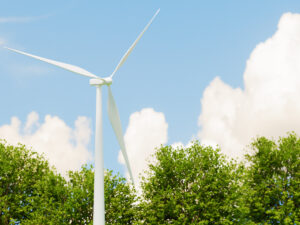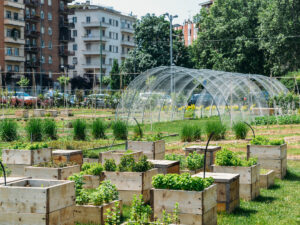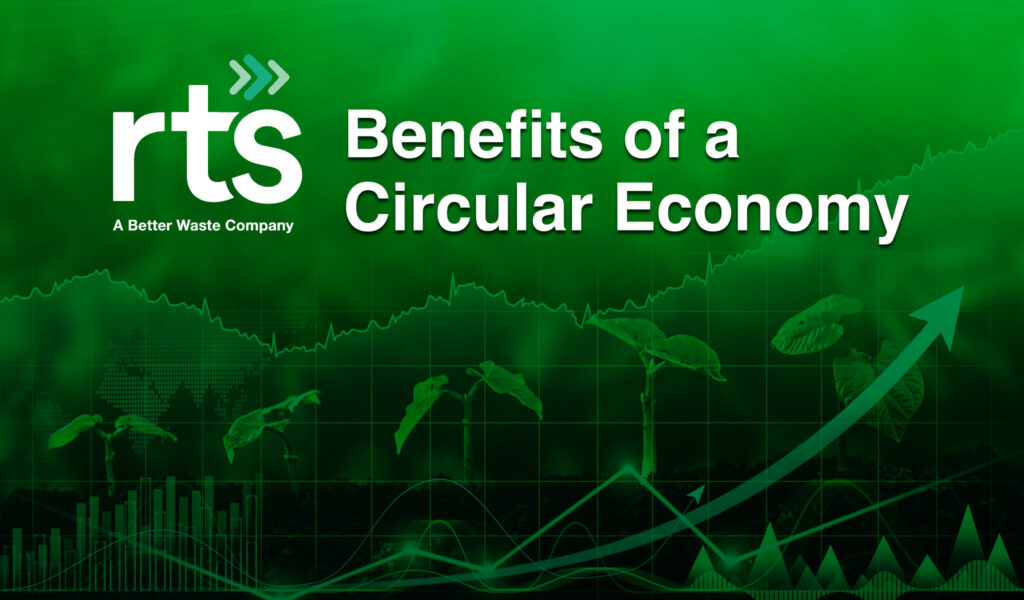The Benefits of a Circular Economy: Building a Sustainable Future
There’s little doubt that threats such as climate change, resource scarcity, and our growing waste issues are challenging the traditional linear model of economic development. The theory of ‘take-make-dispose’ is proving unsustainable and potentially causing irreversible damage to our planet. So, as the global population and demand for resources continue to rise, there’s a real need to rethink how we use materials and, more fundamentally, how we design our economies.
A circular economy offers a genuine alternative. It’s a model that breaks the link between growth and consumption, focusing on the continual use of resources, minimizing waste, and regenerating natural systems. By reevaluating product design, supply chains, consumption patterns, and end-of-life strategies, the circular economy is providing a more holistic approach to sustainable development.
What is a Circular Economy?
The circular economy is a regenerative system that aims to maximize the value of resources. It does this by keeping products, materials, and components in circulation for as long as possible. This challenges the conventional linear approach, which is heavily reliant on the extraction of resources, mass production, and short product lifespans, all of which generally leads to wasteful disposal practices.
At its core, the circular economy revolves around three main principles:

- Design out waste and pollution: By creating smarter product designs, manufacturers can prevent environmental harm at the beginning of the lifecycle.
- Keep products and materials in use: Emphasis is placed on reusing, repairing, refurbishing, and recycling.
- Regenerate natural systems: Circular practices aim to enhance the environment, such as through soil restoration or biodiversity support.
By promoting closed-loop systems and sustainable design, the circular economy ensures long-term resource security, economic resilience, and environmental stewardship.

 Environmental Benefits
Environmental Benefits
Key environmental benefits of the circular economy include:
Reduction in Waste and Pollution
A key environmental benefit of the circular economy is the drastic reduction in waste output. By extending the lifecycle of products and eliminating unnecessary materials, waste generation decreases significantly. Circular practices also reduce harmful byproducts and emissions that result from traditional manufacturing and disposal processes, thereby lowering air, water, and soil pollution.
Conservation of Natural Resources
In a circular system, the emphasis on reuse and recycling helps reduce the demand for virgin materials like metals, minerals, and fossil fuels. This leads to better conservation of natural ecosystems and biodiversity. Extracting fewer resources also means fewer ecosystems are disrupted or destroyed in the process. As an example, the textile industry utilises around 4% of global freshwater annually. Simultaneously, people throw away still-wearable clothes worth an estimated $460 billion each year.
Lower Greenhouse Gas Emissions
Circular models help curb greenhouse gas emissions by reducing the energy-intensive processes associated with raw material extraction and production. By manufacturing goods using recycled inputs and operating within localized, efficient systems, companies can greatly reduce their carbon footprints—an essential factor in mitigating climate change.
Currently, about 45% of global greenhouse gas emissions come from product use and manufacturing, as well as food production. Circular economy strategies which reduce the use of resources could cut global greenhouse gas emissions by as much as 39%.
Regeneration of Ecosystems
Circular agriculture and nature-focused systems are designed not just to avoid harm but to restore environmental health. This includes practices like composting organic waste, reforestation, regenerative farming, grasscycling, and water recycling. These processes enhance soil fertility, improve biodiversity, and promote the overall resilience of ecosystems.
Resource Efficiency and Waste Reduction
Through improved design and smarter systems, the circular economy increases material efficiency, meaning that fewer resources are required to deliver the same value. This efficiency minimizes unnecessary consumption and helps meet growing global needs in a sustainable manner.
 Economic Benefits
Economic Benefits
As well as the environment, the circular practices can have some major economic advantages too, including:
Cost Savings for Businesses and Consumers
Circular practices reduce the cost of materials and waste disposal for businesses, which could be as high as $640 billion by 2050. For example, designing products for longevity or modularity allows companies to save on resources and reduce production costs. Consumers also benefit from more durable and repairable products, reducing the frequency and cost of replacements.
Job Creation and Workforce Development
A circular economy promotes labor-intensive industries such as repair services, recycling, remanufacturing, and reverse logistics. These sectors create meaningful employment opportunities that are less susceptible to automation and offer opportunities for reskilling and workforce development. It is estimated a move to a circular economy could create as many as 7 to 8 million new jobs globally.
Compliance and Future-Proofing
As regulations around environmental impact and sustainability tighten globally, businesses that adopt circular practices are better positioned to remain compliant. For example, as more states introduce laws focused on Extended Producer Responsibility (EPR), shifting toward a circular model helps companies stay ahead of the curve by developing advanced recycling and waste management capabilities. By proactively implementing these strategies, businesses can future-proof their operations—minimizing risk from emerging laws, resource scarcity, and environmental liabilities while positioning themselves as leaders in sustainable innovation.
Supply Chain Resilience and Risk Management
Circular systems reduce reliance on virgin inputs and global supply chains, making businesses less vulnerable to resource scarcity, geopolitical tensions, and price volatility. Localized loops, recycled materials, and inventory reuse contribute to greater supply chain resilience and adaptability.
Economic Growth and Business Opportunities
Innovative circular business models such as product-as-a-service, leasing, and refurbishment are opening up new revenue streams. Entrepreneurs and startups in areas like clean tech, recycling innovation, and circular product design are capitalizing on the growing demand for sustainable waste management solutions. These practices stimulate sustainable growth and long-term profitability.
 Social Benefits
Social Benefits
Completing the triangle of benefits the circular economy can bring, the social advantages that can be pushed really increase buy-in from the general public. These include:
Improved Quality of Life
Reduced pollution, better waste management, and more accessible products lead to improved living conditions, especially in urban areas where waste and environmental degradation are most concentrated. A circular economy is one of the most effective plastic pollution solutions and a great way to limit the damage we can cause to the wider environment.
Empowerment of Local Communities
Circular initiatives often involve local production, repair, and reuse programs, which create economic opportunities and foster social cohesion. Local repair cafes, urban farming projects, and community-led recycling efforts give people more control over their resources and environment.
Consumer Benefits and Value Creation
Consumers gain access to affordable, durable, and customizable products. From refurbished electronics to clothing rental services, the circular economy provides flexible, cost-effective solutions tailored to the modern world.
Stakeholder Engagement and Societal Benefits
A shift toward circularity enhances transparency and collaboration across the value chain. It encourages businesses to engage more responsibly with their stakeholders—including workers, customers, and communities—resulting in stronger trust and broader societal impact.
Circular Economy in Action: Real-World Examples
Several organizations and cities have successfully adopted circular economy principles, demonstrating both the feasibility and benefits of the model.
- IKEA has introduced furniture take-back and refurbishment programs, aiming to become fully circular by 2030.
- Renault, the French car manufacturer, has integrated remanufacturing into its business model, refurbishing automotive parts to reduce waste and raw material use.
- Amsterdam is leading citywide circular initiatives, including circular construction projects and reuse markets. The city aims to reduce the use of new raw materials by 50% by 2030.
Challenges and the Path Forward
Of course, while immensely promising, the transition to a circular economy is not going to be easy. There are complex challenges that will need to be overcome, including:
- Cultural resistance: Many consumers and businesses are still rooted in linear consumption habits.
- Infrastructural and technological gaps: Recycling systems, product designs, and supply chains need significant transformation.
- Policy and regulatory hurdles: Supportive regulations, incentives, and frameworks are not uniformly in place across regions.
- Economic inertia: Existing investments and business models often disincentivize the shift to circularity.
To achieve significant progress, governments must try to implement supportive policies and provide incentives, which will help to foster public-private collaboration. Education, research, and infrastructure investment will also be key to ensuring a scalable and equitable transition.
Conclusion
The circular economy presents a genuine opportunity to create a sustainable, resilient, and inclusive world. By designing out waste, keeping materials in use, and regenerating natural systems, it aligns environmental aims with economic growth and social development.
As climate change, resource scarcity, and environmental degradation increasingly become a reality, the need for a new economic model has never been more urgent. The circular economy not only addresses these challenges but also redefines value. It makes sustainability not just a moral imperative, but a strategic advantage.
By embracing circularity across all sectors, together we can build a future that thrives within our resource limitations and environmental boundaries, ensuring a better planet for generations to come.
Sources
Adekoya, O. A., Akinyemi, L. P., & Yusuf, I. O. (2023). Environmental sustainability and circular economy: Pathway to a greener future. IOP Conference Series: Earth and Environmental Science, 1303(1), 012012. https://doi.org/10.1088/1755-1315/1303/1/012012/pdf
ARPA-E. (n.d.). Closed-loop system using waste heat for electricity. U.S. Department of Energy. https://arpa-e.energy.gov/programs-and-initiatives/search-all-projects/closed-loop-system-using-waste-heat-electricity
World Resources Institute. (2021, June 24). 5 opportunities to advance the circular economy. https://www.wri.org/insights/5-opportunities-circular-economy
United Nations Statistics Division. (n.d.). Environmental health indicators (UNSD) [PDF]. https://unstats.un.org/unsd/environment/envpdf/UNSD_UNEP_ECOWAS%20Workshop/Session%2004-5%20Environmental%20health%20indicators%20(UNSD).pdf
Natural Resources Defense Council. (n.d.). Regenerative agriculture 101. https://www.nrdc.org/stories/regenerative-agriculture-101
United Nations Environment Programme. (2024). Global waste management outlook 2024. https://www.unep.org/resources/global-waste-management-outlook-2024
Circle Economy. (2023, October 10). Can a circular economy create good jobs? New study reveals global North bias. https://www.circle-economy.com/news/can-a-circular-economy-create-good-jobs-new-study-reveals-global-north-bias
Economics Observatory. (2023, February 16). How are geopolitical risks affecting the world economy? https://www.economicsobservatory.com/how-are-geopolitical-risks-affecting-the-world-economy
Circonnect. (n.d.). What is product-as-a-service? https://www.circonnect.org/en/kennisbijdrage/wat-is-product-as-a-service/
City of Amsterdam. (n.d.). Circular economy policy. https://www.amsterdam.nl/en/policy/sustainability/circular-economy/
Ellen MacArthur Foundation. (n.d.). COVID-19: Shaping incentives to enable a circular, low-carbon economy. https://www.ellenmacarthurfoundation.org/covid-19-shaping-incentives-to-enable-a-circular-low-carbon-economy
Organisation for Economic Co-operation and Development. (n.d.). Circular economy: Policies and country studies. https://www.oecd.org/en/topics/sub-issues/circular-economy-policies-and-country-studies.html
U.S. Environmental Protection Agency. (2023, August 1). Sources of greenhouse gas emissions. https://www.epa.gov/ghgemissions/sources-greenhouse-gas-emissions
RTS. (n.d.-a). Circular economy: A guide to understanding the concept and its benefits. https://www.rts.com/resources/guides/circular-economy/
RTS. (n.d.-b). Plastic pollution solutions: How to reduce plastic waste. https://www.rts.com/blog/plastic-pollution-solutions/

